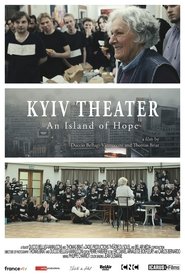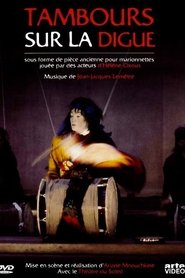detail profile duccio bellugi vannuccini
Peran Yang Di Mainkan Duccio Bellugi-Vannuccini
 February 2022 Russia invades Ukraine a war...
February 2022 Russia invades Ukraine a war...Kyiv Theater, An Island of Hope 2024
February 2022. Russia invades Ukraine, a war that brings back dark memories and tragic lessons from World War II. Ariane Mnouchkine, the founder of the Théâtre du Soleil who was born when war was declared in 1939, was in shock. For her, going with part of her troop to Ukraine is above all a message of solidarity and gratitude towards this people of resistance who are fighting both for their freedom but also for that of Europe. The desire of Ariane Mnouchkine and her actors is to find with Ukrainian artists, beyond differences of language and culture, a common and universal language: that of theater.
 Sibyl a jaded psychotherapist returns to...
Sibyl a jaded psychotherapist returns to...Sibyl 2019
Sibyl, a jaded psychotherapist, returns to her first passion: writing. But her newest patient Margot, a troubled up-and-coming actress, proves to be a source of inspiration that is far too tempting. Fascinated almost to the point of obsession, Sibyl becomes more and more involved in Margot’s tumultuous life, reviving volatile memories that bring her face to face with her past.
 A filmcrew in the early twentieth...
A filmcrew in the early twentieth...The Castaways of the Fol Espoir 2014
A film-crew in the early twentieth century, the cabaret known as ‘Le Fol Espoir’ has been transformed into an amateur soundstage. The motion picture tells the story of a ship and its passengers – from the famous opera singer down to the petty criminal. The film is an optimistic political fable intended to educate the masses. There’s comedy aplenty – slapstick punches, custard pies and gags reminiscent of Buster Keaton and Fatty Arbuckle; there’s adventure, high drama moments of great bravura , and passionate love stories. The filming begins on June 28th 1914, the day of the Archiduke Franz Ferdinand’s assassination in Sarajevo, the gunpowder that sets Europe alight. It ends with news of another assassination – that of Jean Jaures on July 31st followed by the general conscription of August 1st, heralded by church bells across France. The allegory of the shipwreck is filmed at breakneck pace during the last five weeks before war breaks out.
 Based on the play by Hlne...
Based on the play by Hlne...The Flood Drummers 2003
Based on the play by Hélène Cixous, filmed in 2002, Tambours sur la Digue is a story written by Hélène Cixous based on an ancient Asian fable about who shall be saved during a flood and presented by live actors as puppets and puppeteers, evoking the theatrical traditions of Japanese Noh and bunraku.

 A 48yearold homeless singer and composer...
A 48yearold homeless singer and composer... Irene moves to Paris to begin...
Irene moves to Paris to begin...